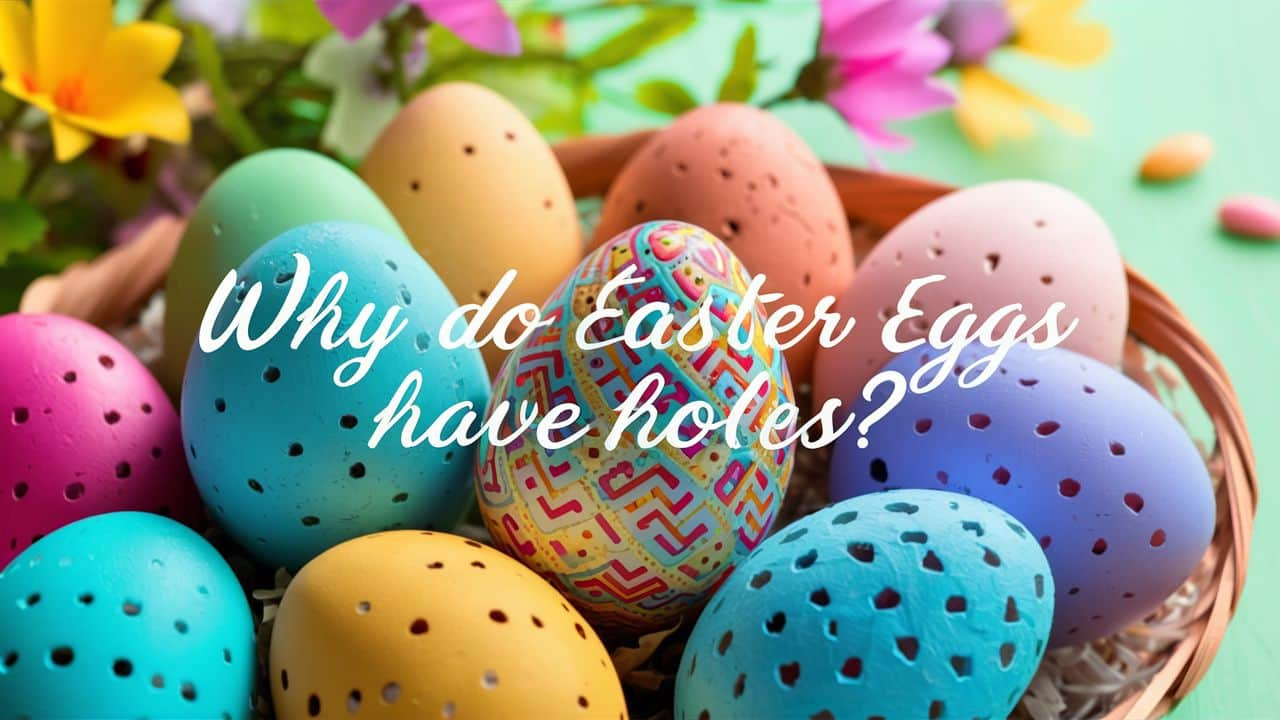Easter eggs, with their vibrant colors and intricate designs, are a beloved symbol of the Easter holiday. However, have you ever wondered why these eggs often feature a small hole at the bottom? This seemingly insignificant detail holds a fascinating historical and cultural significance that spans centuries. In this blog post, we embark on a journey to uncover the mysteries behind the presence of holes in Easter eggs.
From ancient traditions to modern practices, we explore the various reasons behind this peculiar aspect of egg decoration. We delve into folklore, religious customs, and practical considerations that have shaped the evolution of this tradition. By understanding the origins and significance of these holes, we gain a deeper appreciation for the rich tapestry of Easter traditions that have been passed down through generations. Whether you’re a curious enthusiast or simply intrigued by the customs surrounding Easter, join us as we unravel the story behind why Easter eggs have holes at the bottom.
Key Reasons Behind Holes in Easter Eggs
If you’ve ever decorated Easter eggs, you’ve likely noticed that many of the eggs have a small hole at one end. This hole serves an important purpose in the egg decorating process. But where does this tradition come from and why do the holes exist? Let’s explore the reasons behind this curious Easter tradition.
The Origins of Decorating Eggs
The practice of decorating eggs dates back thousands of years to ancient civilizations like the Persians, Egyptians, Greeks, and Gauls. Eggs were seen as symbolic of new life, fertility, and rebirth in spring. Many ancient cultures decorated eggs during spring festivals and celebrations.
The tradition carried over into Christianity to represent Christ’s resurrection and rebirth. Decorating eggs became part of Easter celebrations, with the eggs serving as a symbol of the rock tomb from which Christ arose after his crucifixion.
Why the Holes?
So why do Easter eggs have that signature hole at one end? The hole allows the contents of the raw egg to be blown out, leaving just the empty shell behind to be decorated.
Blowing out the contents makes the egg last much longer before going rotten. An intact raw egg would only last a few weeks before spoiling. But an emptied eggshell can last for years when kept dry.
Blowing the Egg
To blow out an egg, a small hole is made at the narrow end using a needle, skewer, or small nail. A slightly larger hole is made at the wider end. The person then puts their lips over the wider hole and blows firmly into the egg, forcing the egg white and yolk to come out through the smaller hole.
Once fully emptied, the eggshell can be rinsed out and dried. The empty shell is now ready to be decorated using dyes, wax, paints, crayons, stickers, or other decorative materials.
Modern Equipment
While you can certainly use the old-fashioned “blow method,” there are now tools available that make emptying eggs easier. Small egg blowers attach to the end of the egg and use a pump or squeeze bulb to suck out the contents. There are also curious wire loop tools that help separate the egg white and yolk from the shell.
Decorating After Blowing
With the eggshells emptied, the creativity can begin! Many cultures developed unique egg decorating traditions over the centuries using dyes, etching, painting, appliques, and more.
In the Ukrainian tradition, eggs are elaborately decorated using a wax-resist method and vibrant dyes. Armenian eggs feature bright red patterns. German traditions use scratched or etched designs. Austrians decorate with tiny garden shears to cut delicate designs into the shells.
Creative modern egg decorators have kept the tradition alive with mind-blowing examples of ornate designs, scenes, portraits, patterns, and egg art.
So the next time you decorate an Easter egg, appreciate the small hole that enables this age-old tradition! That tiny opening allows you to connect with Easter and springtime celebrations that stretch back thousands of years.
How To Seal Easter Eggs That Have Holes?
Sealing Easter eggs with holes requires careful handling to prevent leaks and maintain their structure. Here are two effective methods:
Method 1: Using Beeswax
Materials:
Beeswax
Candle (for melting the wax)
Spoon or toothpick
Paper towel
Steps:
Melt the wax: Light the candle and hold a small piece of beeswax above the flame using a spoon or toothpick. Be cautious while handling hot wax.
Form a plug: Let a small amount of melted wax drip onto the paper towel. Once slightly cooled, roll the wax between your fingers to form a small cone-shaped plug.
Seal the hole: Gently press the wax plug into the hole of the eggshell. Make sure it fits snugly.
Secure the seal: Use the remaining melted wax to create a thin layer around the base of the plug, effectively sealing the hole.
Method 2: Using Mod Podge
Materials:
Mod Podge (gloss or matte finish)
Water
Paintbrush
Eye dropper (optional)
Steps:
Create a diluted solution: Mix equal parts Mod Podge and water in a small container.
Apply to the outside: Use the paintbrush to apply a thin layer of the Mod Podge mixture around the hole and the surrounding eggshell.
Optional: Reach the inside: If you have an eye dropper, carefully draw some of the solution and inject it into the egg through the larger hole. Tilt the egg to coat the inner surface slightly.
Let it dry: Allow the Mod Podge to dry completely. You might need to apply additional coats for a stronger seal.
Additional Tips:
Blow out the eggs carefully: Ensure minimal tearing of the membranes inside the egg to prevent leakage.
Focus on a clean seal: A well-sealed hole is crucial to prevent dye or moisture from seeping in.
Let the eggs dry completely: Before decorating or hiding the eggs, ensure both the inside and outside are fully dry.

